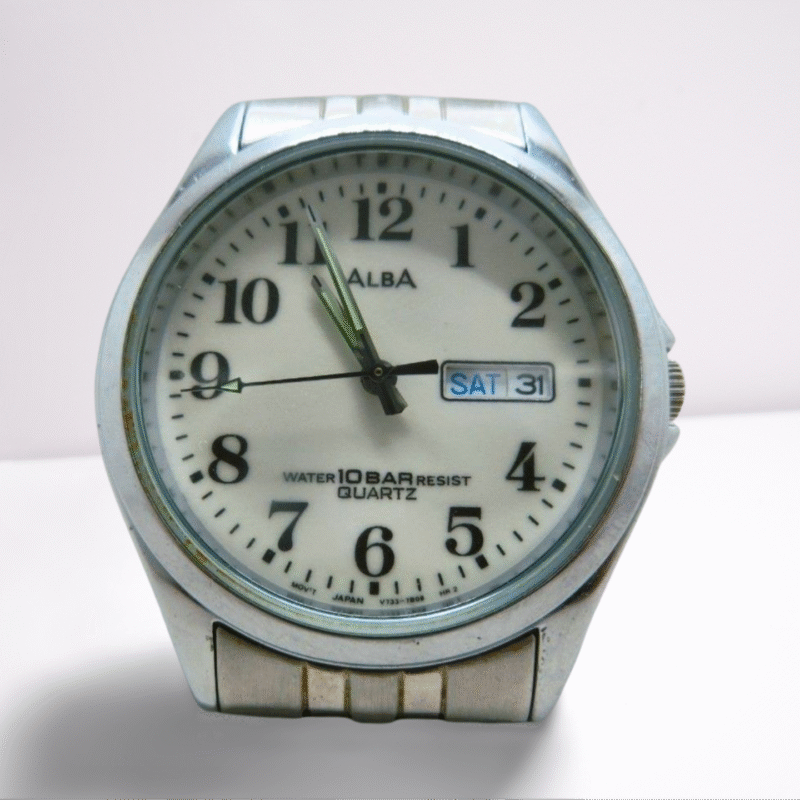Alba Watches, once a vibrant and youthful sub-brand of Seiko, captured the imagination of an entire generation. In this post, explore Alba Watches’ peak and downfall, tracing how this iconic Japanese brand rose to prominence in the 1990s before quietly fading from the mainstream market. As a longtime vintage watch enthusiast, see how these timepieces evolved and why they still matter to collectors today.

The Peak: Fashion Meets Precision
Alba watches In the 1990s reached its highest point. Seiko positioned the brand as a youthful, trend-driven alternative to its more conservative lines. I remember seeing Alba watches in bright colors, futuristic shapes, and even with manga-inspired designs. It wasn’t just a timepiece it was a fashion statement. What made Alba special was its balance. The watches looked trendy but performed with precision. Quartz technology gave it the reliability Seiko was known for. It wasn’t just style for the sake of it Alba delivered real value.
Alba found a strong following in Southeast Asia, Japan, and parts of the Middle East. Its ads showed young people in energetic cityscapes, wearing watches that matched their fast-paced lifestyles. Models like the Alba Spoon and the collaboration pieces with anime artists became cult favorites. These watches offered individuality in a market filled with conformity. Retailers loved Alba too. It filled a gap between high-end watches and low-quality fashion brands. It was Seiko’s way of connecting with new generations.

The Downfall: Lost Identity and Market Shift
Alba watches couldn’t sustain its momentum despite its early success. As fashion trends shifted and smartwatches rose in popularity, Alba failed to adapt. Seiko began focusing more on its premium lines Grand Seiko, Prospex, and Presage. Alba quietly slipped down the priority list. I noticed the change when fewer models appeared in stores and online listings started drying up. Marketing became almost nonexistent. Without strong promotion or digital presence, Alba struggled to stay visible.
At the same time, brands like Casio, Fossil, and Swatch captured the youth market with bolder branding and smart tech. Alba, once ahead of its time in design, now felt stuck in the past. Its audience moved on, and the brand didn’t follow. The final blow came from inside. Seiko never gave Alba a clear identity in its global portfolio. It was hard to explain where Alba fit: Was it a fashion brand? A collector’s item? A tech watch? The lack of clarity hurt its appeal. Consumers want to connect with a brand’s story Alba stopped telling one.

Final Thoughts
Alba Watches enjoyed a sharp, vibrant peak. It spoke to a generation that valued expression and accuracy. But without reinvention, even bold ideas fade. Today, Alba is a shadow of what it once was a nostalgic name among vintage collectors like me. Still, the best Alba watches remind us of a time when design dared to be different. They live on in collections, in stories, and on wrists of those who remember.
Explore and Contact Us Today
Are you looking to invest in a used vintage watch? Visit NewJapanDeals for an exclusive selection of pre-owned luxury timepieces. Have questions? Contact us today and let us help you find the perfect vintage watch for your collection!





